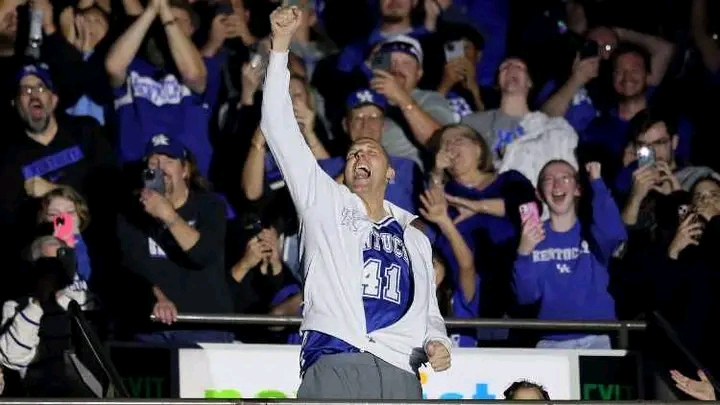SAD NEWS: Kentucky guard Reed Sheppard decided to leave the club out of anger… Read more…
Catchall stats have limitations, especially early in the season, with a limited sample size against varying levels of competition as most college basketball teams elect to schedule as many November home wins as possible. Regardless, they can provide some value in identifying early standouts and players to hone in on once teams play real competition.
Box plus-minus is arguably the most useful of the catchall stats. Four of the players ranked No. 1 over the past five seasons — Trayce Jackson-Davis (2023), Keegan Murray (2022), Evan Mobley (2021), Obi Toppin (2020) and Zion Williamson (2019) — were top-10 draft picks, with Jackson-Davis being the exception. The player ranked No. 1 this season, Reed Sheppard, might surprise some, making him worthy of a deeper look.
Kentucky has played only one top-100 opponent — Kansas in the Champions Classic, where Sheppard racked up 13 points and four steals in 16 minutes during a loss — with the Wildcats’ best win coming at home in overtime against Saint Joseph’s (ranked 108 per Ken Pom).
Even against lower-level competition (and in limited minutes versus Kansas), it’s easy to see how good Sheppard is and why he has been arguably Kentucky’s most productive player, averaging 18.2 points, 6.1 rebounds, 5.9 assists, 5.3 steals and 1.7 blocks per 40 minutes while shooting 67% from both inside and outside the arc.
Sheppard uses and rejects ball screens effectively to get into the paint off crossovers and hesitation moves, reading the floor with poise and patience and making the game easy for teammates by whipping the ball all over the court with outlet passes, finding cutters and rollers over the top, and with skip passes for open 3s. He also is an outstanding shooter with deep range with his feet set and pulling up off the dribble, showing no hesitation getting into his jumper with a quick release and impressive confidence.
Defensively, he generates turnovers instinctually with timely digs, traps and post-doubles, shooting the gap for steals, intercepting entry passes, flying around off the ball, and wreaking havoc with smart rotations to protect the rim. He’s got quick hands, and an even quicker mind, helping him compensate for his lack of physical tools, which show up at times with the way bigger players can shoot over the top of his limited length or overpower him one-on-one.
Measured 6-foot-2 in shoes with a 6-3 wingspan and 187 pounds at Kentucky’s pro day, Sheppard’s dimensions aren’t going to blow teams away, which is why making the transition to full-time point guard will likely be important to maximize his draft stock down the road. Can he attack pick-and-roll switches when teams force him to be a one-on-one scorer? Does he have the size and length to slow down elite-level guards consistently? How will his ballhandling hold up when he’s the focal point of an opposing scouting report?
These are questions we don’t have the answer for after six games, but we will know a lot more about as we get into SEC play. It’s unlikely Sheppard went into the season planning on being one-and-done, and there’s a strong argument to be made that coming back and having the keys to Kentucky’s offense next season (when D.J. Wagner and Rob Dillingham likely move on to the NBA) could be highly beneficial for his long-term development. We’ll have to see how the campaign plays out. — Jonathan Givony



